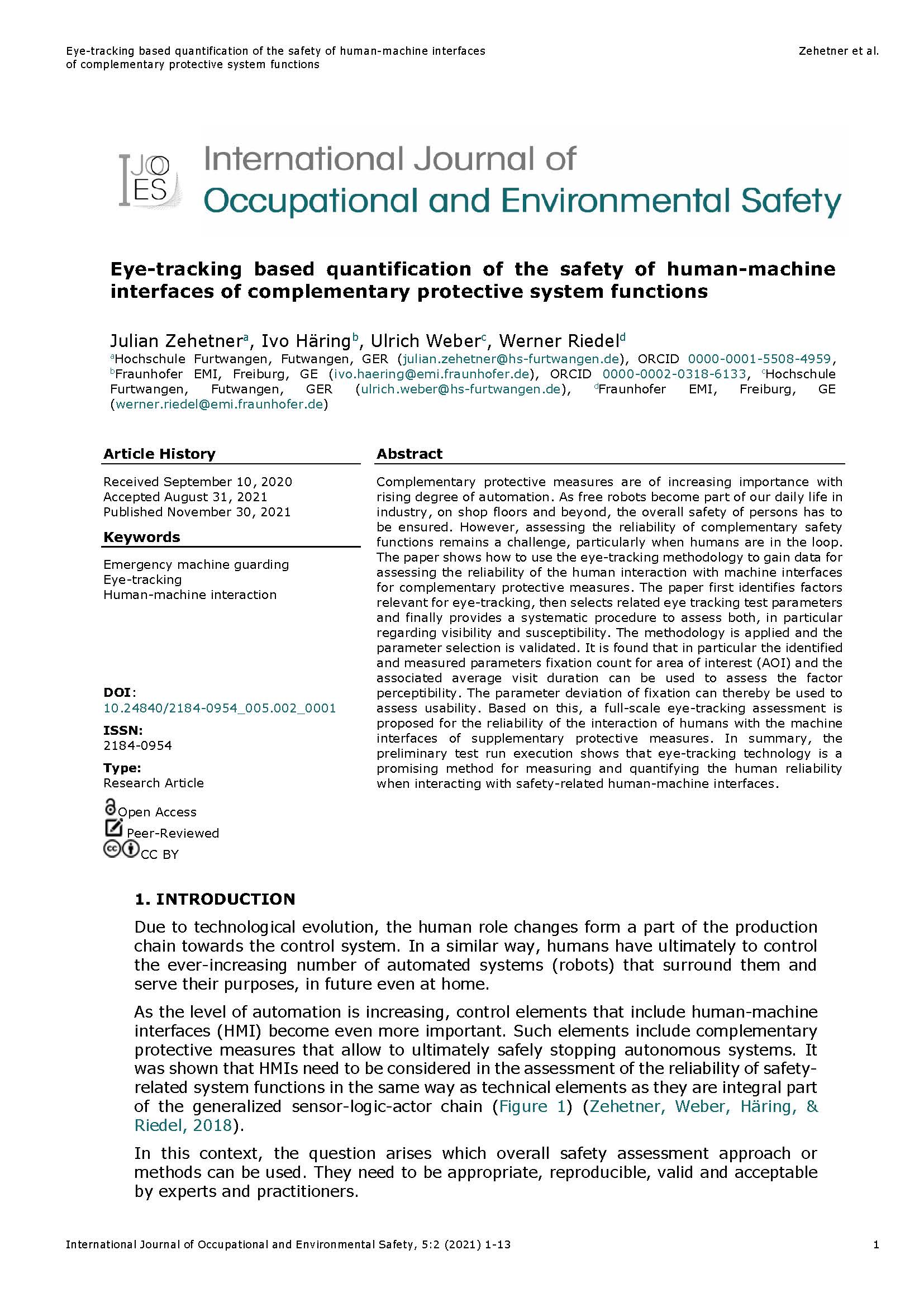Eye-tracking based quantification of the safety of human-machine interfaces of complementary protective system functions (Article)
Main Article Content
Abstract
Complementary protective measures are of increasing importance with rising degree of automation. As free robots become part of our daily life in industry, on shop floors and beyond, the overall safety of persons has to be ensured. However, assessing the reliability of complementary safety functions remains a challenge, particularly when humans are in the loop. The paper shows how to use the eye-tracking methodology to gain data for assessing the reliability of the human interaction with machine interfaces for complementary protective measures. The paper first identifies factors relevant for eye-tracking, then selects related eye tracking test parameters and finally provides a systematic procedure to assess both, in particular regarding visibility and susceptibility. The methodology is applied and the parameter selection is validated. It is found that in particular the identified and measured parameters fixation count for area of interest (AOI) and the associated average visit duration can be used to assess the factor perceptibility. The parameter deviation of fixation can thereby be used to assess usability. Based on this, a full-scale eye-tracking assessment is proposed for the reliability of the interaction of humans with the machine interfaces of supplementary protective measures. In summary, the preliminary test run execution shows that eye-tracking technology is a promising method for measuring and quantifying the human reliability when interacting with safety-related human-machine interfaces.
Article Details

This work is licensed under a Creative Commons Attribution 4.0 International License.

